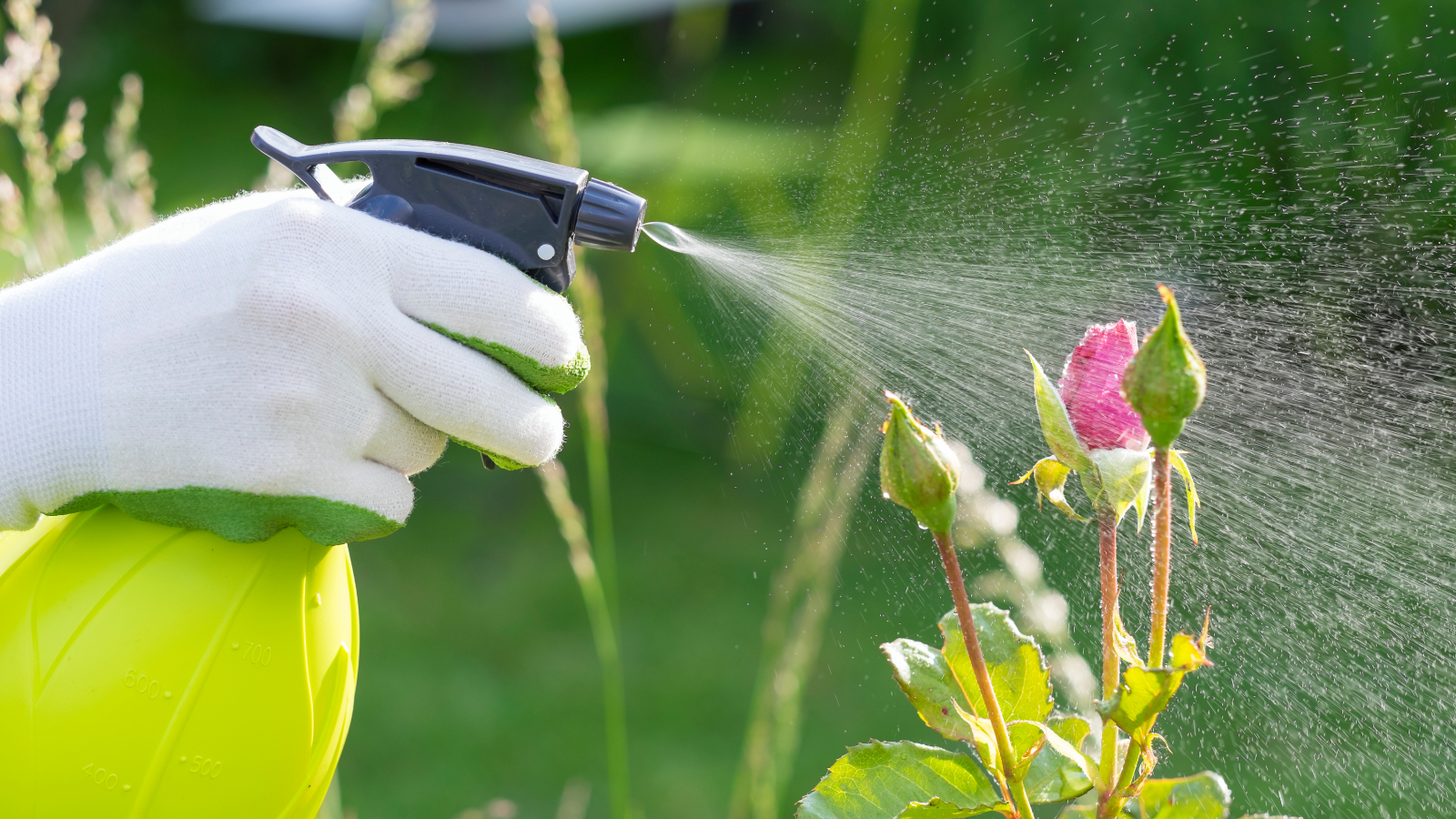How To Make Natural Fungicide That Won’t Hurt Plants
Stirring up a batch of homemade natural fungicide can go a long way in treating various garden problems and is more environmentally friendly than other options.

A natural fungicide for use in your garden isn’t hard to find or create. Fungal diseases can be very destructive in the garden, causing unsightly blemishes, rot, and even killing plants.
While chemical fungicides can be effective in treating these infections, many home gardeners prefer to use more environmentally friendly solutions. Prevention is best, but when you have a fungal infection in the garden, try a natural, DIY fungicide to save your plants.
Benefits of Homemade Fungicide
The primary benefit of using a homemade or natural fungicide is to avoid using chemical agents that are harmful to the environment and wildlife. Homemade products are often easier to use, safer for you, and less expensive. You can make many of these products with ingredients you already have. However, if you do opt for a store bought fungicide, this organic Neem Oil-based fungicide, available on Amazon, is free of harsh chemicals.
How to Make Natural Fungicide at Home
You might need some trial and error to develop the best natural fungicide for plants in your garden or for houseplants. Some recipes will work better than others on specific types of fungi. Here are some natural recipes to try:
Baking soda - The alkalinity of baking soda prevents fungal spores from reproducing, but it likely won’t kill the fungus. Mix four teaspoons in a gallon of water for an effective solution. Some studies suggest potassium bicarbonate solutions are more effective.
Dish soap - Another easy home mixture that can be effective against fungus on plants is a teaspoon of dish soap in a gallon of water.
Apple cider vinegar - Mix four tablespoons of apple cider vinegar in a gallon of water for an effective fungal spray.
Sign up for the Gardening Know How newsletter today and receive a free copy of our e-book "How to Grow Delicious Tomatoes".
Painted daisy - Painted daisies have an anti-fungal substance in their flowers called pyrethrin, which is a natural fungicide. Dry a few handfuls of the flowers, grind them up, and soak them in a gallon of water for a day or two to make a fungicidal spray. You can get painted daisies at Burpee.
Bordeaux mixture - You may not have the ingredients for this recipe at home, but they’re easy to find at garden centers. Bordeaux is a 1 to 1 to 10 mixture of copper sulfate solution, lime, solution, and water. This organic copper fungicide spray from Amazon is a ready-made, chemical free version of this recipe.
How to Use Homemade Fungicide
Test your fungicide before using it full-scale on any plant. Even natural products have the potential to cause damage. Apply it to one leaf and observe it over a couple of days for signs of damage, like yellowing.
Many homemade solutions work better when mixed with an oil, like vegetable oil. Use the mixture in a spray container, like this affordable one from Walmart, and the oil will help the fungicidal material adhere to the leaves of the plant. If you are using natural treatments in the outside garden, you’ll need to reapply them regularly, especially after rain.
How to Reduce the Need for Fungicides
Prevention is always best, of course, so take measures to reduce the need to use even natural fungicides by preventing fungal infections.
Start by choosing healthy plants with no signs of disease and from reputable nurseries.
Put plants in areas appropriate for their growing needs. A plant that prefers dry conditions is likely to succumb to fungal rot in a wet area of the garden, for instance.
Practice good garden hygiene to further reduce the risk of fungal infections. Avoid watering plants overhead. Use irrigation at the soil line by installing a system like this one from Amazon. This keeps foliage dry. Wet foliage is more likely to develop an infection. Give plants adequate space for good airflow. Trim and thin plants as needed if they are too crowded.
If you have diseased plants or foliage, remove and destroy them appropriately. Put them in yard waste. Do not compost them. Keep the soil around plants free of debris where fungal spores often thrive. Fungi in the soil that splashes onto leaves can lead to infections.
Natural fungal remedies might not be as effective as chemical sprays, but they are generally safer. If you still struggle with fungal infections on plants, contact your local extension office for identification and advice on how to treat it.

Mary Ellen Ellis has been gardening for over 20 years. With degrees in Chemistry and Biology, Mary Ellen's specialties are flowers, native plants, and herbs.

